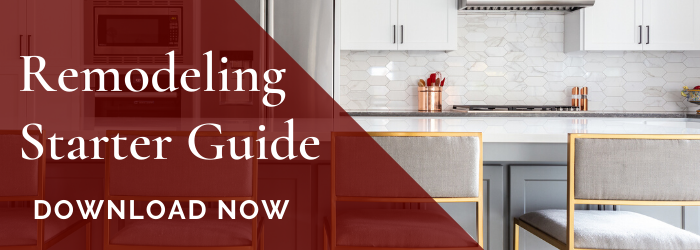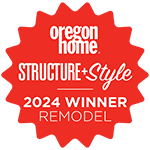Not every Portland-area house is designed to accommodate children, so if you’re fortunate enough to be able to design a custom home from the ground up or engage in a whole-house remodel for the benefit of your family, you’ve got lots of options to ponder.
Although many six-member Baby Boom families were happy to grow up in 1,200-square-foot postwar ranch homes, with extra bedrooms added in the basement as the kids grew, today’s expectations for what children need in a home have ballooned as family size has shrunk. These days, many parents expect each child to have his or her own bedroom from infancy, and if bathrooms are to be shared, they at least need to be Jack and Jill baths with two sinks for side-by-side tooth brushing. As the children get to school age, they will appreciate having their own bathrooms.
Kid-Friendly Design Ideas
When designing a home with children in mind, be sure to take a long view and create a plan that’s flexible enough to shift with the changing needs of your growing children. For example, when your children are very young, the bedroom or nursery should be close to your room. When the kids are teenagers, both parents and teens probably will appreciate more separation, with rooms on different floors or at opposite ends of the house. At that point, the near-at-hand nursery can be converted to an office or sewing room or, potentially, an “away room” where the parents can retreat for some adult conversation.
The Kitchen
The kitchen, which has undergone a re-imagining with each generation, now has become the center of the home for many families. It can be designed accordingly, with an adjacent breakfast area or built-in countertop seating where family members can sit and eat or visit while someone is in the kitchen preparing food.
Many kitchens have a nook with space for a computer and appropriate storage, for parents to do paperwork. With children and their homework in mind, such areas can be designed in the vicinity of the kitchen, or another living area where adults are likely to be close, for the kids to use. Pocket doors for these areas can give you the flexibility of creating privacy or an open flow between areas, depending on the needs of the moment.
Storage
Children’s possessions have a way of multiplying when no one is looking, so a home designed for a family has ample storage in multiple areas for: books, toys, clothes, outdoor gear, sports equipment, schoolwork, and electronic devices. Outdoor toys and tools, including bicycles, also call for intelligently designed places for storage. From an early age, children seem to be plugged in, so get ahead of that reality by creating storage for video game consoles, tablets, phones, laptops, etc. Such cabinets can keep cords and other accessories out of sight and should incorporate multiple electrical outlets inside for charging.
Laundry
Consider creating a combination mudroom and laundry area. The mudroom should have an entrance from the outside or the garage, where coats and muddy or wet boots can be shed and stashed. Be sure to create a laundry area with enough space for clothes on hangers, folding surfaces, an ironing board, folded laundry, and cleaning supply storage. The mudroom also can serve as a home base for pets, where a dog crate can be set up and food, toys, and other animal accouterments can be stored. For more information on laundry and mudrooms, click here.
Play Areas
Most parents don’t want their children’s rooms or the public spaces of the home overrun with toys. If possible, create a playroom not too far away from the action where little ones can be happy, and where built-in storage creates a place for everything to be put away. Such a room can be converted in later years to a homework space, music room, or hangout for teens. Whimsical spaces can be fun to design, such as an attic playroom hidden behind a swinging bookcase.
Incorporate into your plan child-proof materials such as smudge-less stainless steel appliances, scrubbable paint on walls and cabinets, cleanable hard-surface floors, and washable upholstery fabrics.
Outdoor Area
Young children need outdoor room to run and explore, and a home design should take that into account. With the trend toward outdoor living spaces, parents who are cooking, entertaining, or just chilling on a nice day will be able to keep an eye on the young ones. For older children, outdoor spaces should allow for sports practice. A multi-use court for basketball and other games is a possibility, with landscaping to keep bounding balls away from the neighbors’ flowers and windows. Need more inspiration? Take a look at this kid-friendly outdoor oasis in Lake Oswego.










